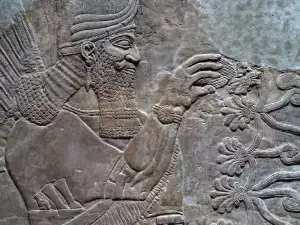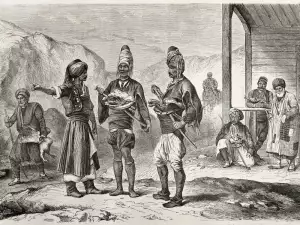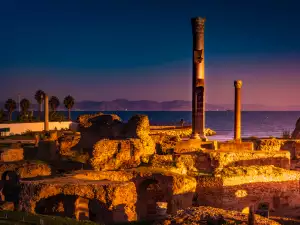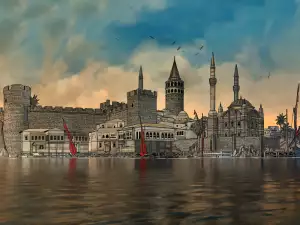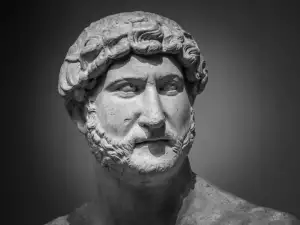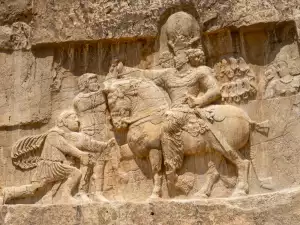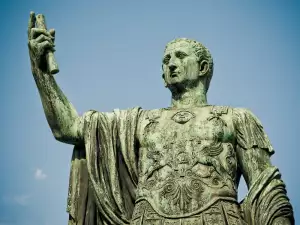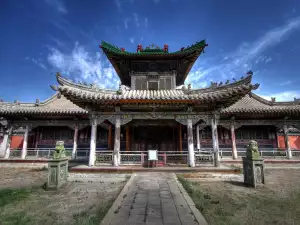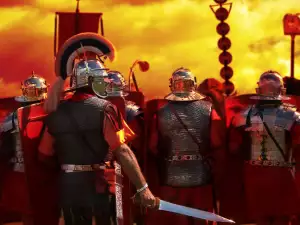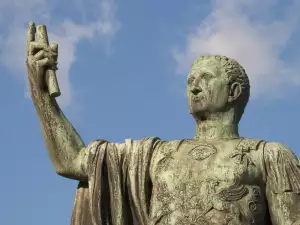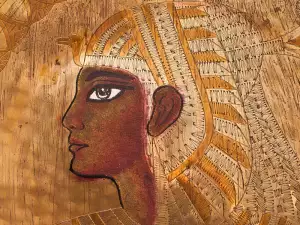World history knows many significant empires created in antiquity and among them the Persian Empire stands out especially brightly with its brilliance. The emergence of the empire was a grandiose political project, one of the largest countries known to history. It also amazes with the scope of its construction thought, as well as with its conquering successes. An empire that succeeds on all fronts. And this makes it significant and great for its time.
The name of the empire, Persia, is derived from Persis, which in ancient Greek is the name of the region of Fars, where the tribes that later created this mighty empire lived. Today's state of Iran is the heir of the glorious empire of the tribes that inhabited these places.
Most ancient population of Persia and the era before the dynasties that ruled the Persian Empire
The oldest traces of human presence in the lands of the Persian Empire date back to 6 thousand years BC. These prehistoric inhabitants of the lands in the mountainous parts of the Zagros were pastoralists and farmers who grew wheat and barley. Remains of their food vessels with various designs on them have been found.
First, Persians and Medes settled in these lands. They are nomads who migrated to present-day Iran from Asia between 1500 and 800 BC.
Later they began to build fortified settlements. Their first city was Sialk, whose construction dates back to 3900 BC. The Persians are believed to be one of the first farmers to discover the process of fermentation and start producing wine.
Regarding their religious beliefs, the first coherent religious system for them was Zoroastrianism. Later, other religions like Islam, Christianity and Judaism entered, but the ancient Persians professed the ideas of Zoroaster, which this preacher and prophet formed in 1000 BC.
Establishment of the Persian Empire
The Persian Empire ruled various dynasties that successively ruled Persia.
The mythological founder of the Achaemenid dynasty was Achaemen, who ruled from 705 to 675 BC. The great rulers of Persia belong to this dynastic line.
Achaemenus is a mythical figure as he is believed to be the son of the ancient Greek hero Perseus, known from mythology for slaying the mythical monster the Gorgon Medusa. He gives the name to the entire Persian nation. Legends say that Achaemenus was raised by an eagle. In 701, Achaemenus led the Persian migration to Persepolis.
Herodotus tells, that at first the Persians were a divided people and dependent on their neighbors - the Medes. At the beginning of the 6th century BC, King Cyrus, called the Great by the Achaemenid dynasty, united the Persian tribes. He crushed the kingdom of Media and led the victorious Persian expansion. Cyrus the Great conquered Babylon, Syria and Palestine, the Lydian kingdom in Asia Minor, as well as the Greek polises there. The conquering policy of Cyrus expanded the boundaries of the Persian kingdom to such extent that all of Asia Minor became part of the empire.
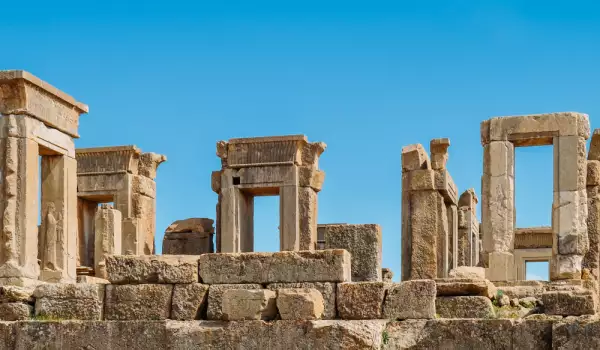
The mighty founder of the Persian Empire Cyrus the Great died in battle with the Massagetae queen Thomyris. This happened in 529 BC, after Cyrus attacked the lands of the Massagetae.
After Cyrus the Great, his son Cambyses II took his place and continued his conquests. He succeeded in conquering Egypt and made an attempt to conquer the lands to the south, but failed. On his way back to Persia, he was killed by conspirators from the palace circles.
The chaos that ensued was brought under control with the rise to power of Darius I. He builds on what was built by Cyrus the Great and quickly gets the empire back on its feet. Darius' reign was a high point for the Persian Empire. He waged wars with the Greeks because of the revolt of the Greek polises under Persian rule in Ionia. The uprising was brutally suppressed in 499 BC and this led Darius I to enter Thrace with his army.
The first phase of the war began with the Battle of Marathon, won by the Greeks. Darius failed to conquer Greece in the first phase of the Greco-Persian Wars and this task was left to his son Xerxes I. But despite this military setback, Darius led the Persian Empire to its Golden Age. He carried out successful administrative reforms and imposed Zoroastrianism as the religion of the Persians.
Darius' son, Xerxes I, devoted his entire reign to the idea of conquering Greece. He prepares for 4 years for war with the Greeks and sets out with a huge army on a campaign. At first, the circumstances were completely on his side, he had a larger army, excellent capabilities as an attacking party, a huge fleet, but due to wrong decisions made by the ruler himself, his army was defeated in several decisive battles and finally destroyed almost completely. Xerxes had to flee Greece.
The peace treaty that was signed between the Persian Empire and Greece confirmed the Greek dominance in the area and the emperor of Persia is trying to leave a significant mark on history through large-scale construction projects, starting construction of a new grand palace. This leads to increased taxes and starvation for the population. Finally, he too was killed by conspirators, along with the crown prince.
The entire Achaemenid dynasty declined completely. The Macedonian ruler Alexander the Great demolished it in less than 10 years in his victorious campaigns to conquer new lands.
Seleucid Dynasty
Alexander the Great and before that his father Philip of Macedon took advantage of the weakening of the Persian Empire. Alexander entered Lydia, Phoenicia and Egypt with his army in 334 and defeated the army of the Persian king Darius III. The last Persian resistance was up to the royal palace in the ancient capital Persepolis.
For several centuries the Persian Empire fell under Greek cultural influence, although Alexander retained the splendor of Persia and himself adopted and imposed the orders in the palace life of the Persians and in his empire.
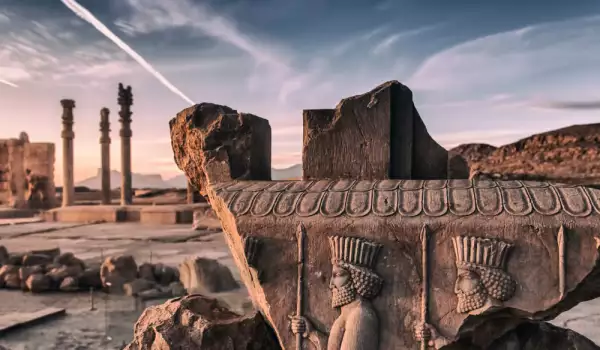
After the early death of Alexander the Great, one of his generals, Seleucus I Nicator, took control of these lands from Alexander's empire, which included the Persian kingdom. This is the beginning of the reign of a new dynasty - the Seleucids.
Seleucus I was killed before conquering Greece and Macedonia. Greek colonization strengthened the influence of Hellenic culture. The trade with China, begun under the Achaemenids, grew under the Seleucids and with it Buddhism entered as a religion in Persia, while Zoroastrianism shifted its influence in a western direction. The Seleucid kingdom in turn declined and was replaced by the Parthian kingdom and the Roman Empire.
Kingdom of Parthia
The Parthian kingdom dominated the territories of the Persian Empire for about 5 centuries, until the beginning of the 3rd century. It was ruled by the Arsacid dynasty, another ruler who led the nomadic Parthian tribe that conquered parts of the Seleucid kingdom. The Parthians gradually expanded their dominions and extended over most of the lands of the Persian Empire.
In 224, the Parthian kingdom was replaced by the Sassanid Empire. The Sassanid Empire is also called the Second Persian Empire. It existed from the 3rd to the 7th century.
The founder of the dynasty was Sasan, who ruled Fars as a vassal of the Parthian kingdom. The capital of the Sassanid Empire is near the old Persian capital of Persepolis.
The reign of the Sassanid dynasty is considered the heyday of the ancient Persian lands. They were supporters of Zoroastrianism and made it the state religion, showing religious tolerance, like their predecessors.
The Sassanid kingdom waged continuous wars with Rome that depleted the state's strength and it was conquered by the Arab Caliphate. The last Sassanid king was killed in 651. After the Sassanids, the Persian Empire finally collapsed.
Persia's legacy to mankind
Persia was an empire of conquerors, but at the same time it was one of the glorious and philanthropic civilizations of antiquity, however incredible this combination may seem. The remaining artifacts show that in the Persian Empire, people from different places came together to live in peace.
The ancient capital of the Persians, Persepolis, was a cosmopolitan place in the age of barbarism. Cyrus the Great is famous among the conquered peoples, because he respects their languages and allows them to practice their religion. Cyrus the Great proclaimed the Charter of Human Rights back in those ancient times.


